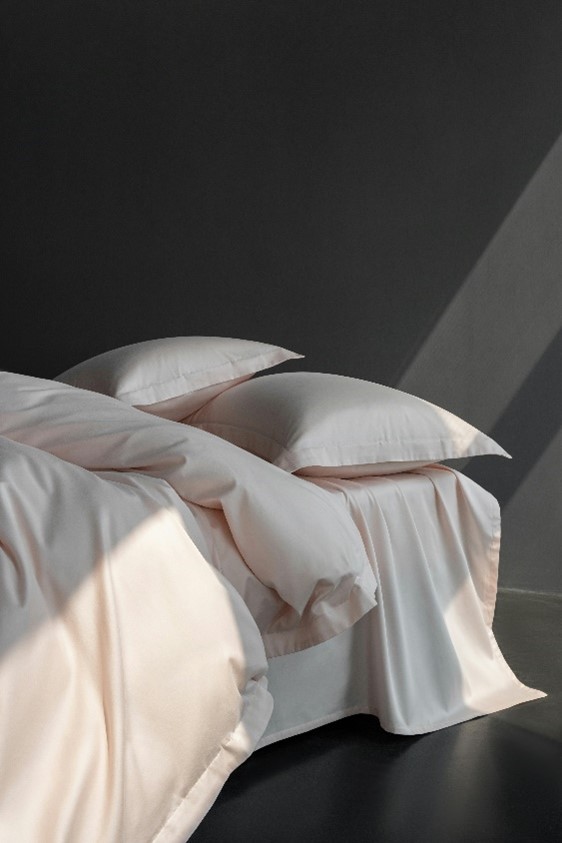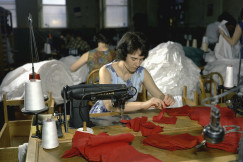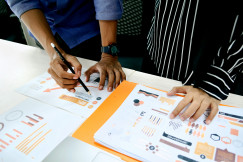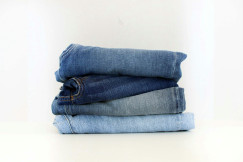Best practices
30 September 2025
Embedding circular thinking in product design: IKEA guidelines
Best practices
30 September 2025
Social dimension
Sustainable competitiveness
Textile
+3 more
Login / create an account to be able to react

IKEA success lies not only in its global reach and affordability, but in the way design is treated as a strategic enabler of sustainability and circularity. By placing the design phase at the core of its transition, IKEA acknowledges that decisions taken at this stage determine product durability, reparability, adaptability, and end-of-life options. Over the years, the company has translated this vision into structured guidelines and practical tools, such as the Circular Product Design Guide, making circular design principles accessible to both its internal teams and the wider design community. This systematic approach positions IKEA as a reference point for integrating design-driven innovation with circular economy objectives
IKEA
Topics
Albania
Armenia
Austria
Belgium
Bosnia and Herzegovina
Bulgaria
Croatia
Cyprus
Czechia
Denmark
Estonia
EU-27
Finland
France
Georgia
Germany
Greece
Hungary
Iceland
Ireland
Italy
Kosovo
Latvia
Liechtenstein
Lithuania
Luxembourg
Malta
Moldova
Montenegro
Netherlands
North Macedonia
Norway
Poland
Portugal
Romania
Serbia
Slovakia
Slovenia
Spain
Sweden
Switzerland
Türkiye
Ukraine
Other
Academic / Research and VET Institutions
Business Support Organisation
Company with 250 or more employees
Cluster Organisations
Consumer Organisations
Cultural and Heritage Organisations
Destination Management & Marketing Organisations
EU Institutions
Financial Institutions and Investors
Industry Associations and Chambers of Commerce
International Organisations
Local Authorities
Media / Journalist Organisations
National authorities
Networks and Federations / Confederations
NGOs / Non-profits
Notified Bodies
Regional Authorities
SMEs (a company with less than 250 employees)
Social Economy Entity
Trade Unions
Other
-
Transition Pathway's building blocks
-
-
Social dimension
-
Sustainable competitiveness
-
-
Industrial ecosystems
-
-
Textile
-
-
Textiles ecosystem areas
-
-
Fibres, yarns and fabrics
-
Household/interior textiles
-
Waste management, reuse and repair
-
Share
Design as a distinctive factor and an enabler of circularity
IKEA is recognised worldwide for its extensive range of products, including furniture, mattresses, accessories, and home textiles. What has made IKEA successful globally is not only its affordability, but also the way design lies at the heart of its strategy, serving as a distinctive feature that combines functionality, aesthetics, and scalability in ways that reach millions of households. Moreover, IKEA places particular emphasis on the design stage as a key lever to achieve its circularity goals, recognising that decisions made at this stage have a cascading impact on how long products last and what happens to them at the end of their life cycle.
IKEA Circular Product Design Guide
Already in 2017, IKEA began developing its Circular Product Design Guide, a set of internal guidelines for circular product development. In the process of implementing its circular design guidelines, IKEA assessed its 10,000 products, and in 2024, it published the third revision of the Guide. The guidelines have been made available to designers and the broader public through a free Interactive tool.
The Guide covers design for renewable and recycled materials, standardisation, care, repair, adaptability, remanufacturing, and recyclability. Interestingly, IKEA, which pioneered the ready-to-assemble model, is now extending this concept to circularity by adopting the ‘design for disassembly and reassembly’ concept. The idea is that products can be taken apart, moved, repaired, and adapted to different life stages.
Reducing the environmental impact of textiles through design and materials selection
Textiles account for 6% of the total materials weight consumed by IKEA. The company uses them in a wide range of products, including bed linen, tablecloths, curtains, rugs, towels, sofa coverings, as well as comfort materials (polyester, polyurethane, natural fibres, etc.) in sofas and mattresses.
The IKEA Sustainability Report, FY24 highlights that textile materials represent a significant share of the company’s environmental impact, contributing to 18% of its climate footprint (in tonnes of CO₂eq) due to their resource-intensive growing practices, production processes, and petroleum-based chemicals in synthetic fibres and foam. As such, IKEA continually explores ways to increase recycled content and reduce textile waste, starting from the design phase of its products. Examples include:
- The launch of a new line of curtains, designed using textile-to-textile recycled content, derived from pre-consumer PET textile waste.
- The design of some bed linens with up to 20% of recycled cotton, and, since 2024, of bedspreads with up to 40% of recycled cotton. Cotton is recovered from cotton waste, such as yarns, fabrics, and garments, sourced according to the Global Reporting Standard.
- The introduction of cottonised jute for specific products in the table setting range, as an alternative material with a lower climate footprint compared to virgin cotton, and ongoing research on bast fibres.
- The piloting of a foam-less sofa designed using IKEA’s circular design principles. This is made with thermo-bonded felt made from fabric waste, including mixed fibres and blends, from IKEA production waste and other used textiles.
Conclusion
As many studies highlight, 80% of a product's environmental impact is influenced by decisions made at the design stage. The IKEA case demonstrates that circular design guidelines are useful tools to accompany an organisation, and the designers within it, in a transition to a more circular approach to business while meeting market demand for more sustainable products.
Comments (0)
See also
-
181
Breaking the silence: how data is transforming gender equality in textile factories
- Categories
- Sustainable competitiveness Regulation and public governance Textile +11 more
-
42
BALI Chair: Multi-stakeholder collaboration as a driver of systemic change
- Categories
- R&I, techniques and technological solutions Skills Social dimension +9 more
-
86
Prolonging the lifespan of denim: repair and reuse services at Nudie Jeans
- Categories
- R&I, techniques and technological solutions Skills Social dimension +10 more




